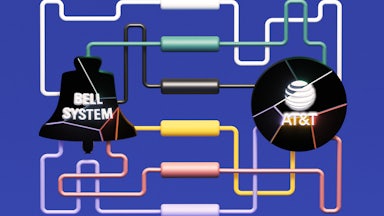Substack, the flourishing four-year-old newsletter company, has always touted itself as a savior. It was a way to make real money from writing without the hand-to-mouth hustle of freelancing. You could work without a boss and bet on yourself. Above all, it was a means of escaping the turbulence of the media industry. There would be no quotas or metrics or layoffs or arbitrary changes driven by tech monopolies. With few exceptions, journalism as an industry is in free fall. Stable jobs are few and far between. Substack offered another way.
But over the past few weeks, Substack has faced sustained criticism for the first time in its history. A number of prominent Substack authors have left the platform in response to revelations that it paid advances to several controversial writers, while some writers with long histories of anti-trans work are thriving. “Over the past several months, I had watched as the platform morphed into a haven for online transphobia, and when I hit my limit, I hit it hard,” wrote Jude Ellison Sady Doyle, who announced they were leaving the platform last week.
At the same time, the company’s lax—which is to say, nearly nonexistent—content moderation policies have also come under fire. Transphobes like Graham Linehan, who have been kicked off other platforms, have found a home at Substack. Others have used their newsletters to launch harassment campaigns against other journalists.
Substack’s response has been defensive and disingenuous. In a blog post published earlier this week, the company essentially accused its critics of creating a straw man by falsely suggesting that its paid program, Substack Pro, was created to fund anti-trans writers. The company also claimed that it was a neutral platform and that its writers reflected the depth, breadth, and diversity of American society. Substack was but a mirror. “We set out to build a system that gives power to writers, especially those who aren’t well accommodated by the dominant media structure,” its founders wrote. That includes trans writers, but anti-trans ones as well. If that wasn’t enough, Chris Best, one of the company’s three founders, tweeted, “Defund the thought police.”
Substack says its guiding principle is free speech. It says it is agnostic about everything else. “We don’t endorse everything anyone says,” its founders wrote. “But we endorse writer independence and autonomy. We endorse the free press. We endorse the ability to speak truth to power.”
But the very existence of Substack Pro makes it clear that the company is not a neutral platform. By approaching and paying writers, it is engaging in curation and elevating some viewpoints above others. This is a typical editorial role—Substack is basically acting as a publisher. Its appeals to high-minded neutrality are a means of deflecting criticism rather than substantively engaging with it.
The book publishing model is a useful, if limited, analogy. As with Substack Pro, book publishers make bets on writers, luring them with high advances in the hopes that they will produce writing that will earn out the advance. As with Substack Pro, many concerns go into deciding who gets published, but the publisher ultimately makes a decision as to who gets paid and who doesn’t. This is often arbitrary—there is, any publishing employee will tell you, little science in the profit-and-loss statements that guide advances—but ultimately the publisher is rewarding some and not others. Part of the controversy with Substack is that the company is openly wooing figures who have been accused of being bigots.
In recent years, these kinds of acquisitions have become controversial in the book publishing world. Milo Yiannopolous’s book Dangerous was dropped by Simon & Schuster only months after one of its imprints paid $250,000 to acquire it. Hachette canceled Woody Allen’s memoir after a staff walkout. In both cases, other authors pulled books that had been slated for release by different imprints within the same publisher, a dynamic that is not unlike the one at Substack, where writers left the platform.
Still, this type of activism is quite new. Unlike Substack, publishers have imprints that provide a little more order. Instead of one big tent, there are silos. Publishers put out books by Tucker Carlson, Jeanine Pirro, and Mark Levin all the time, with little controversy. (There is similarly little uproar about the conservative voices publishing on Substack, like Erick Erickson; one of the company’s most popular newsletters is the conservative publication The Dispatch.)
Despite its high-minded rhetoric, Substack has been very clear about how it selects writers. The company has a program that “measures a Twitter user’s engagement level—retweets, likes, replies—among their followers,” Clio Chang wrote in Columbia Journalism Review. “This person is then assigned a score on a logarithmic scale of fire emojis. Four fire emojis is very good—Substack material.”
This approach to journalism explains some of the controversy of the last few weeks. Substack approaches journalists based on metrics that reward large followings but nothing else. I wrote last spring about the hope that Substack could help fund reporting, but nothing of the sort has happened at a meaningful level. Instead, Substack is going after takes. It’s now dealing with the predictable fallout: The takes may be hot, but that doesn’t mean that they’re any good.
The result is a platform that doesn’t really fix media’s inequities or flaws, so much as replicates them. The company is certainly happy to welcome new voices when they’ve done the leg work themselves, but it isn’t doing much to find them. Instead, it has focused on writers who were already well known, for good reasons and bad ones. (Yes, the company does have a fellowship program, but its reach pales in comparison to Substack Pro.)
The general aura of mystery around Substack Pro has also led to some confusion. “The small number of writers who have chosen to share their deals—coupled with some wrong assumptions about who might be part of the program—has created a distorted perception of the overall makeup of the group, leading to incorrect inferences about Substack’s business strategy,” Substack’s founders wrote, arguing that the actual makeup was different from how it has been depicted—i.e., a cabal of reactionary white men. This is probably true, but it’s difficult to ascertain given the secrecy surrounding Pro. And that secrecy is, to some extent, understandable—publishers don’t typically disclose how much a writer is paid, for instance. But it’s increasingly clear that Substack the self-publishing platform and Substack Pro are different things. Separating them, as Ed Zitron suggests, would clear up some of that confusion.
However, it might simply be too late. Substack has gained a reputation as a home for reactionaries and cranks that will stick even if the company does make changes, which seems unlikely while one of its founders is railing about the “thought police.” Facebook and Twitter are launching competitors soon. Substack’s race to sign up big, controversial names before those platforms started may have been an attempt to hold off those giants. But that strategy came with a price.








